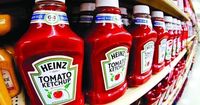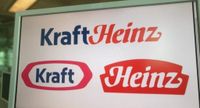On September 2, 2025, Kraft Heinz, the storied American food giant behind such household names as Heinz ketchup, Philadelphia cream cheese, and Kraft Mac & Cheese, announced it will split into two independent, publicly traded companies. The move, which effectively unwinds the blockbuster $46 billion merger that created Kraft Heinz a decade ago, marks a dramatic shift for one of the world’s largest food makers—and signals the end of an era that began with high hopes but ultimately delivered a mixed bag for investors and consumers alike.
The split, which is expected to close in the second half of 2026, comes after years of faltering U.S. sales, investor disappointment, and a string of financial setbacks. Kraft Heinz’s board and leadership say the breakup is designed to reduce operational complexity, sharpen strategic focus, and unlock value that’s been elusive since Kraft and Heinz joined forces in 2015. As Miguel Patricio, executive chair of the board, put it in a statement reported by CNBC and The Guardian: “Kraft Heinz’s brands are iconic and beloved, but the complexity of our current structure makes it challenging to allocate capital effectively, prioritize initiatives and drive scale in our most promising areas. By separating into two companies, we can allocate the right level of attention and resources to unlock the potential of each brand to drive better performance and the creation of long-term shareholder value.”
So, what exactly will the two new companies look like? According to Kraft Heinz’s own breakdown and reports from Bloomberg, CNBC, and The Guardian, the first company—provisionally dubbed “Global Taste Elevation Co.”—will be home to the company’s global sauces, spreads, and seasonings portfolio. This includes iconic brands like Heinz, Philadelphia, and Kraft Mac & Cheese. In 2024, this division recorded $15.4 billion in net sales, with approximately 75% of those sales coming from sauces, spreads, and seasonings. The company is currently searching for a new chief executive to lead this business after the split.
The second company, for now called “North American Grocery Co.,” will focus on the grocery staples business, featuring brands such as Oscar Mayer, Kraft Singles, and Lunchables. Current Kraft Heinz CEO Carlos Abrams-Rivera will take the helm of this new entity. In 2024, North American Grocery Co. generated roughly $10.4 billion in net sales, according to company filings and multiple press reports.
The split, which will be executed as a tax-free spinoff, is designed to give each business a clearer mandate and the ability to pursue growth strategies tailored to their specific markets. Kraft Heinz’s leadership has argued that the current conglomerate structure—formed by the 2015 megamerger orchestrated by Warren Buffett’s Berkshire Hathaway and Brazilian private equity firm 3G Capital—had become unwieldy. “The complexity of our current structure makes it challenging to allocate capital effectively, prioritize initiatives and drive scale in our most promising areas,” Patricio emphasized in statements to the press.
The merger, at the time, was hailed as a transformative deal that would create one of the world’s dominant food companies, with a stable of brands stretching from Cool Whip to Maxwell House coffee. But as The Wall Street Journal and other outlets have chronicled, the reality proved more sobering. U.S. sales began to stumble, and in February 2019, Kraft Heinz disclosed it had received a subpoena from the Securities and Exchange Commission related to its accounting policies and internal controls. That same year, the company slashed its dividend by 36% and took a $15.4 billion write-down on the Kraft and Oscar Mayer brands—two of its biggest assets. Days after that announcement, Warren Buffett admitted to CNBC that Berkshire Hathaway had “overpaid for Kraft.”
The fallout didn’t stop there. A leadership shake-up followed, along with more write-downs on other iconic brands like Maxwell House and Velveeta. Kraft Heinz began shedding assets, selling off most of its cheese unit to French dairy giant Lactalis and its nuts division, including the Planters brand, to Hormel. Despite efforts to revive its fortunes and reinvest in brands like Lunchables and Capri Sun, shares of Kraft Heinz have tumbled roughly 60% since the merger closed in 2015, with the company’s value dropping by more than three-quarters from its post-merger peak, as The Guardian and Bloomberg noted.
The decision to split Kraft Heinz is part of a broader trend among major food and consumer goods companies seeking to streamline their operations and refocus on growth. In August 2025, Keurig Dr Pepper announced plans to undo its 2018 merger, separating its coffee business from its soft drink operations after closing an $18 billion acquisition of Dutch coffee company JDE Peet’s. Two years earlier, Kellogg spun off its snacks business into Kellanova, renaming itself WK Kellogg. Other blue-chip U.S. firms—like Warner Bros Discovery, Honeywell, and General Electric—have also broken themselves up in recent years, hoping to unlock shareholder value and adapt to shifting consumer preferences.
For Kraft Heinz, the split is a response to both internal and external pressures. The company has faced rising ingredient costs, tougher competition, and a shift among consumers toward healthier, more affordable snacks and condiments. Its share price, which had lost more than a fifth of its value in the 12 months leading up to the announcement, rose by 2.7% in pre-market trading after news of the breakup broke, according to The Guardian. Russ Mould, investment director at AJ Bell, told the press: “The demerger at Kellogg in 2023 unlocked some value and perhaps Kraft Heinz is looking to cook up something similar, after a 75% slump in the company’s share price since the merger between HJ Heinz and Kraft back in July 2015.”
It’s not lost on industry watchers that both Kraft and Heinz have long and storied histories. Heinz, founded by Henry J. Heinz in Pittsburgh in 1869, specialized in sauces and condiments, while Kraft began as a cheese delivery business started by James L. Kraft in Chicago in 1903. Before the 2015 merger, Kraft itself spun off its snack division, which became Mondelez International.
Looking ahead, investors and analysts will be watching closely to see if the split can truly unlock value and revive the fortunes of these iconic brands. As one industry observer put it, simply moving assets around the corporate plate doesn’t guarantee success—"processed food is processed food, whatever the legal wrapper,” as Bloomberg succinctly put it. But with new leadership, a renewed sense of focus, and a little luck, Kraft Heinz’s next chapter could finally deliver the growth that’s been missing for the past decade—and maybe even put a little more flavor back into the company’s future.

